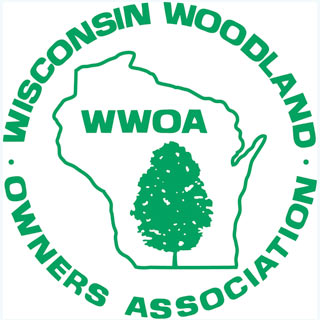Topics 2 – 4:
Topic 2: Safety in the Woods
Safety Publications and Videos
Chainsaw Safety – Log the Right Way
Working Outdoors in Warm Climates
Welcome Box Publications:
- Living with Bears in Wisconsin (purple sheet)
- Preventing Wildfires – WDNR (red pamphlet)
- Poison Ivy and/or Wild Parsnip Wisconsin Wildcards
- Tick Identification Card
Discussion Questions:
- Share a near miss accident that has happened to you in your woods? What could you have done differently to make it a safer situation?
- What are your safety steps before starting a project? Who do you usually work with?
- What protective clothing/equipment do you use when working outside? (helmet, chaps, gloves, safety glasses, etc.)
- Have you ever used chemical treatment solutions for forest health problems?
- Do you have a first aid kit handy in case of emergencies? Where is it?
- Do you go over your retreat paths when cutting timber?
Topic 3: Sources of Professional Advice and Financial Assistance
How to Hire a Contractor for Land Management Activities
Contracting with a Consulting Forester
Professional Forestry Assistance
Foresters and Glossaries of Forestry Terms
Government Agencies/Universities and Programs
Other Sources of Forestry Guidance
NRCS Financial Assistance (this is the national NRCS Financial Assistance webpage)
NRCS Financial Assistance (this is Wisconsin’s NRCS Financial Assistance webpage)
Note: The United States Department of Agriculture (USDA) Natural Resources Conservation Service (NRCS) websites can be very deep, and it is often difficult to distinguish if information you are reading applies to Wisconsin. To ensure that confusion doesn’t occur it is best to always enter “USDA NRCS Wisconsin” so that you reach the Wisconsin webpage rather than the overall national NRCS webpage. The general/national USDA NRCS page can still be beneficial for educational purposes and to read more about programs but just keep yourself oriented correctly online.
Welcome Packet Publications:
- Forestry Facts #75: Hiring a Consulting Forester
- Private Forestry Assistance in Wisconsin (green pamphlet)
- Forester…Logger…Landowner: Working together in your woodlands (gray pamphlet)
- Opening the Door to Resources (brown pamphlet)
- Wisconsin’s Deer Management Assistance Program (DMAP) (brown large card)
Discussion Questions:
- Have you used a cost-sharing program? Which one? What project did you use cost-sharing on? What did you like about that program and what was a challenge with that program?
- Are you currently working with a forester? What kind of forester (private/DNR/consulting/industrial)? Where/how did you find your forester?
- How has your forester been helpful? Have you ever had any issues with your forester?
- Is any/all your land in MFL?
- Have you used any other assistance programs to help you with a projects?
Topic 4: Assessing Your Woodland
Primary Resources:
Forest Stewardship Planning Workbook
Forestry Facts # 48: Getting the Most from your Woodland
Multiple Benefits from Forest Management
TN Forestry A*SYST: Self Assessment to Prioritize Your Forest Uses*This is a 40-page color document. Depending on your internet speed, it may take a while to download*
Managing Wisconsin’s Forested Shorelands – A Landowner’s Guide NEW 2022 resource
The Kitchen Sink (Podcast)– restoration of degraded forest stands due to past land use practices. NEW 2022 resource
Welcome Packet Publications:
- My Land Handbook
- Forestry Facts #87: Caring for Your Woods … A 10-step Plan for Landowners
- Woodland Visions – Appreciating and Managing Forests for Scenic Beauty
- Forest Trees of Wisconsin – How to Know Them (green & blue booklet)
- A Look at Wisconsin’s Forests (pamphlet)
Discussion Questions:
- What has been your most useful resource when assessing your woodland?
- What struggles have you had assessing your woodland? What would you do differently this time?
- What family members helped you to take stock of your property? How were they helpful?
- Have you started using the My Land Handbook? Has it been useful so far?
- How do you go about identifying the species of trees, plants, and wildlife on your property?
- How do you record the land’s soil type and condition. Is it helpful to know this?
- Have you found any threatened & endangered species on your land? Have you found any “special sites” (ecological, historical, archeological, ore geological) on your land? How did you proceed?
- Do you have a map of your property, including boundaries, trails, roads, culverts, bodies of water, etc.? How could this be useful in the future?
Additional Resources: These documents and webpages are supplemental to the primary resources above. These are not meant to overwhelm, but to assist you in particular aspects that you might want to learn more about. Feel free to browse these at your own pace or just focus on the primary resources.
Managing Your Woodlands: A template for your plans for the future
- Guide for Landowners (how to use the above template)
Caring for your Forest: With a Forest Stewardship Plan
Management Planning for Woodland Owners: Why and How
Landowner Goal Assessment Form
How to Manage Your Woodland for Sustained and Maximum Benefits
Forestry 101: What is Silviculture? (YouTube)– An explanation of the process by which a forest can be managed to accomplish the goals of a woodland owner. New 2022 resource
WWOA Website Resources:
- Plant Resources Page
- Soil Resources Page
- Water and Wetland Resources Page
- Wildlife Resources Page
- Karner Blue Butterfly Information
Other Online Resources:
- Endangered Species
- Invasive Species
- Forest Landowners Resources
- Discover Life Identification Guides
- Gary A. Fewless Tree and Plant Identification Online Guide New 2022 resource
- Wisconsin Historic Aerial Image Finder
- Ecological Landscapes of Wisconsin
